BlitzWolf 4 usb and QC BW-S7
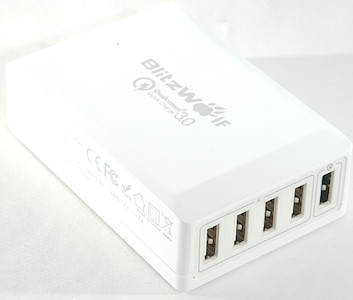
Official specifications:
- Brand: BlitzWolf®
- Model: BW-S7
- Plug: EU, US, UK,AU
- USB Port: 18W(Max) QC3.0 Port + 22W(Max) 4.4A 4-Ports
- Total Power: 40W (Max)
- Input: AC 100-240V~50/60Hz 1A
- Output: 4-Ports: 5V/4.4A (Max)
- QC3.0 Port: 3.6-6.5V/2.4A, 6.5-9V/2A, 9-12V/1.5A (Max)
- Size: 91mm(3.6inch)*58mm(2.3inch)*26mm(1.01 inch)
- Color: White
- Weight: 400g±10g
- Certification: CE,FCC,RoHS,Qualcomm QC3.0
I got it from banggood
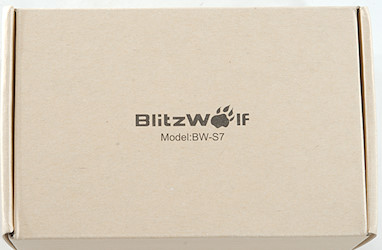
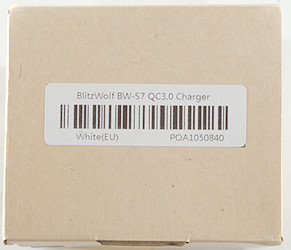
It was in a brown cardboard box without any information except the type number.
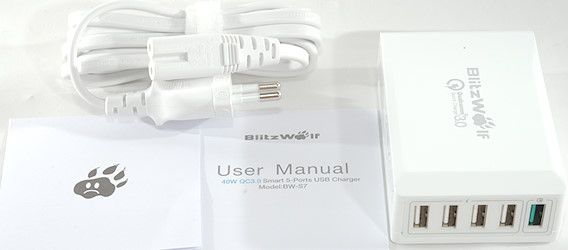
In the box was the charger, a mains cable and a instruction sheet.
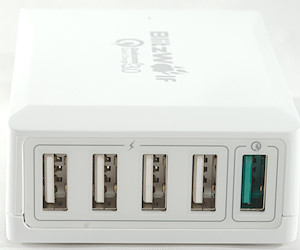
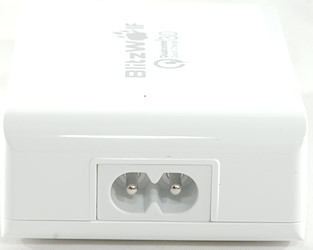
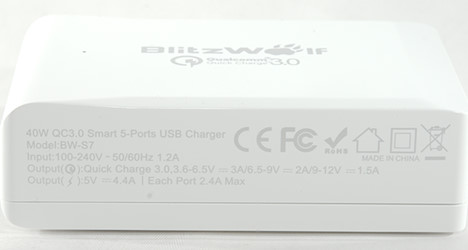
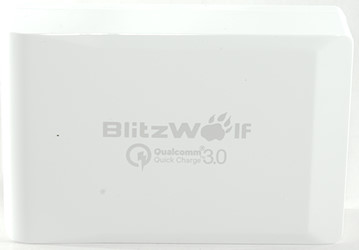
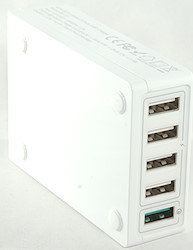
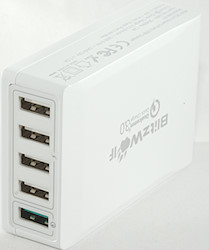
Measurements
- Power consumption when idle is 0.17 watt
- USB output is auto coding with Apple 2.4A, Samsung, DCP and QC2, but only 5V
- The 4 USB outputs are in parallel
- QC output is auto coding with Apple 2.4A, DCP and QC3
- Minimum QC3 voltage is 4.4V, then it resets to 5V.
- Weight: 149g
- Size: 91.5 x 60 x 24.4mm
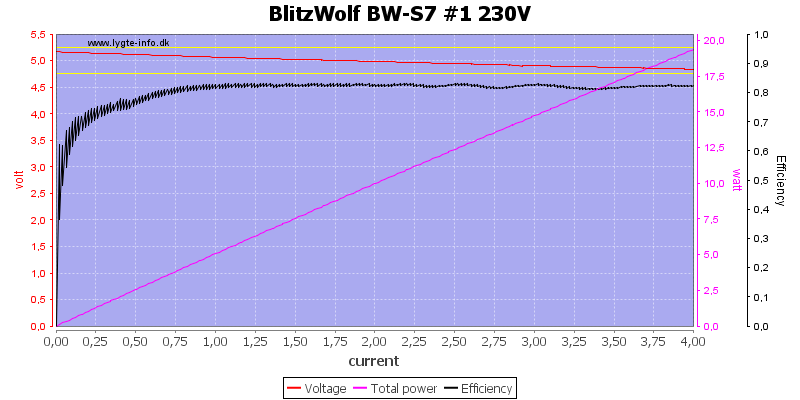
There is no individual port protection on the usb outputs.
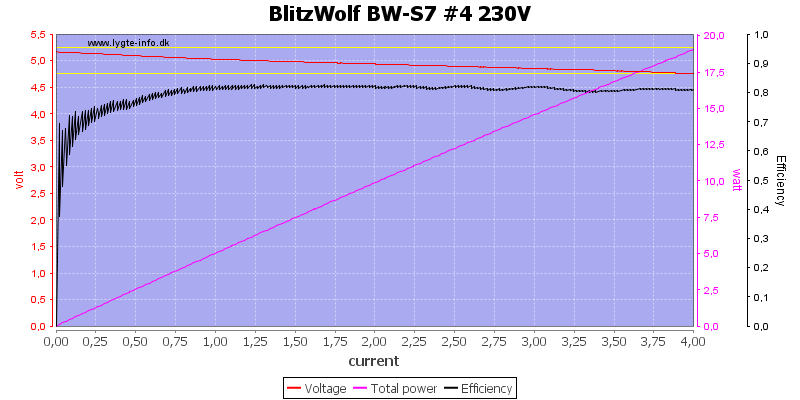
It is the same on this output
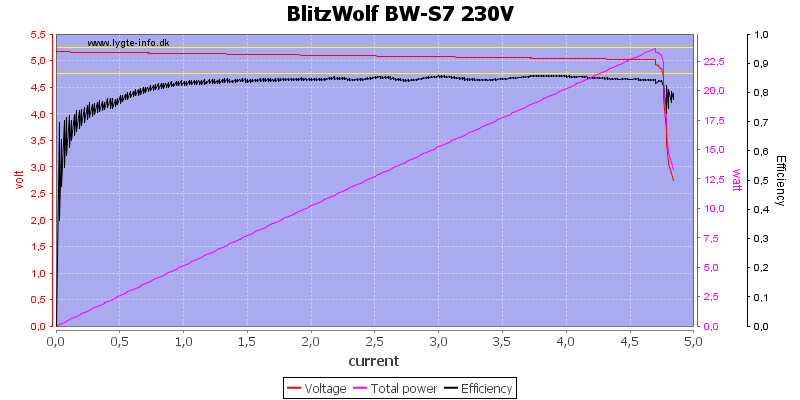
When all four is used the maximum current draw is about 4.7A this matches fine with a 4.4A rating.
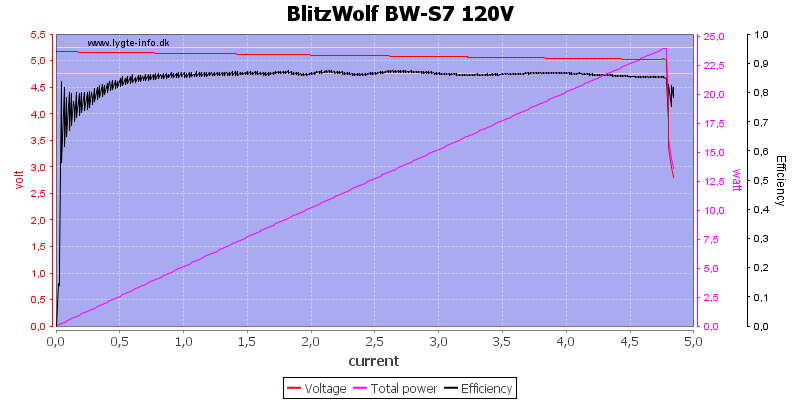
It is the same at 120VAC
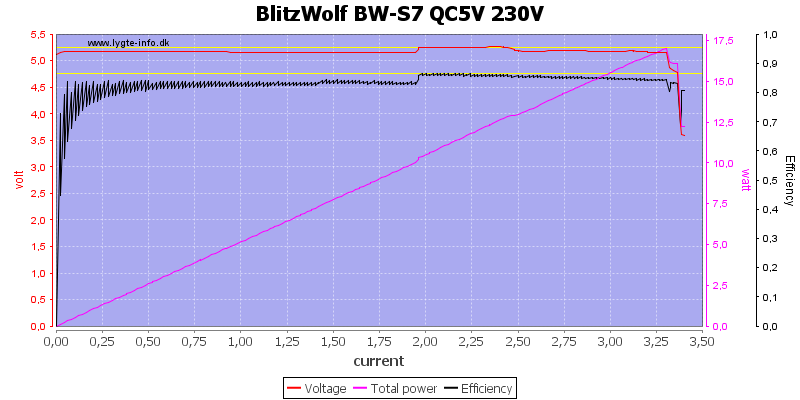
On 5V the QC output can deliver about 3.3A
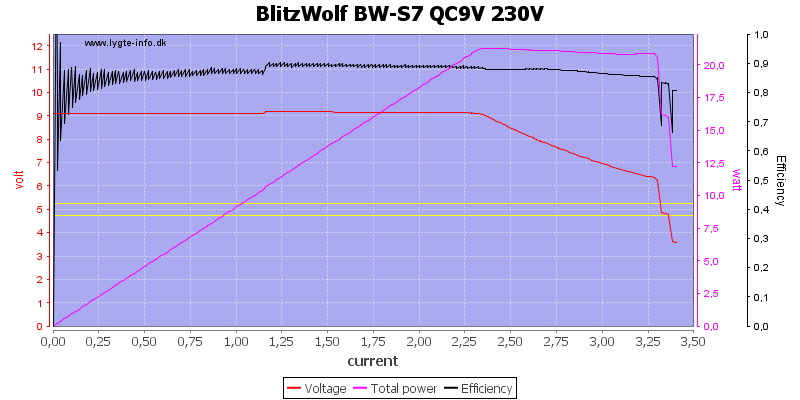
At 9V the output current is down to 2.3A, but the overload protection do first kick in at 3.3A
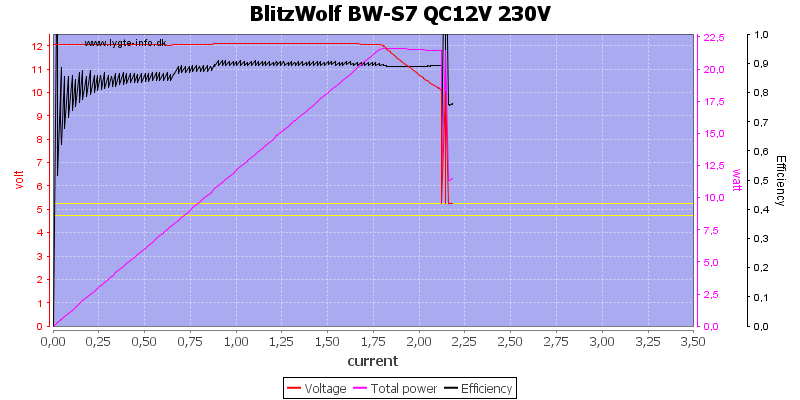
And 1.8A at 12V
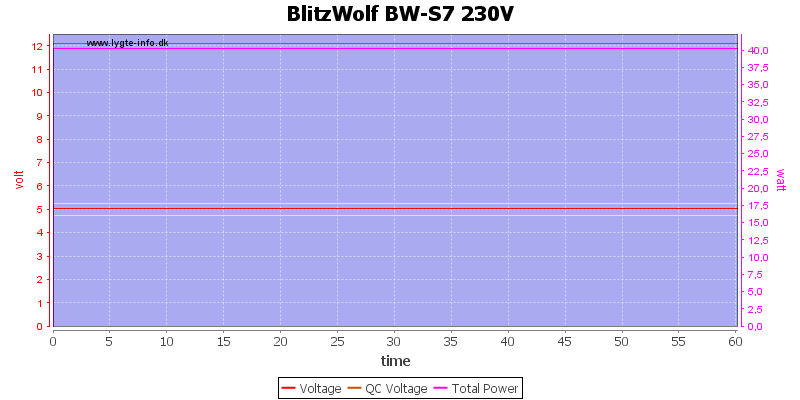
Running the charger with 4.4A on usb and 12V 1.5A on QC it could handle 60 minutes.
The temperature photos below are taken between 30 minutes and 60 minutes into the one hour test.
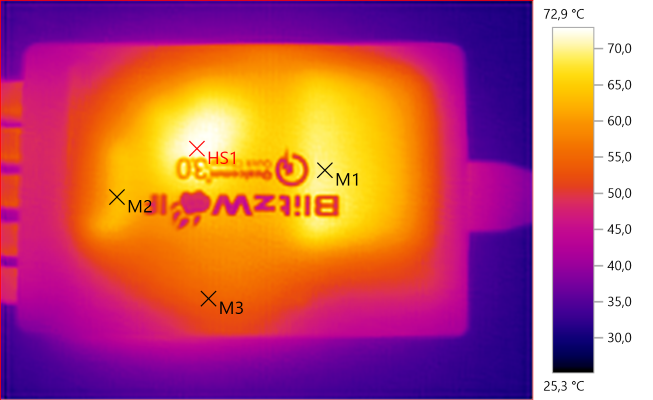
M1: 69.3°C, M2: 63.2°C, M3: 54.4°C, HS1: 72.9°C
HS1 is the usb transformer, M1 is the mains switcher transformer and M2 is the heatsink for the rectifier transistor.
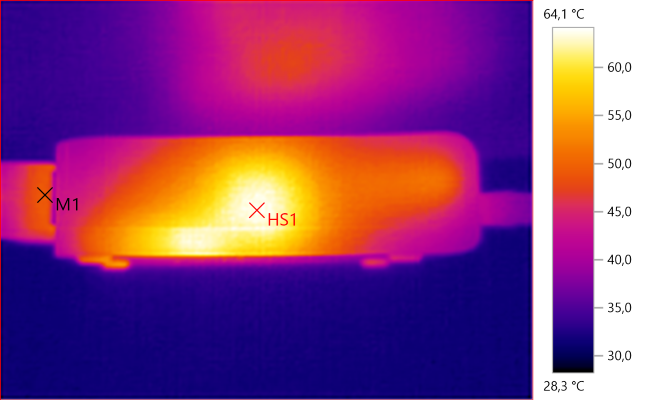
M1: 48.9°C, HS1: 64.1°C
HS1 is the QC transformer, here it is very close to the box and will heat it, next to HS1 is the QC rectifier transistor.

M1: 77.0°C, HS1: 85.8°C
HS1 is the large QC switcher, it is hot and only some of the heat reach the plastic. M1 is the gray heat transfer pad, it is moving some heat from the circuit board.
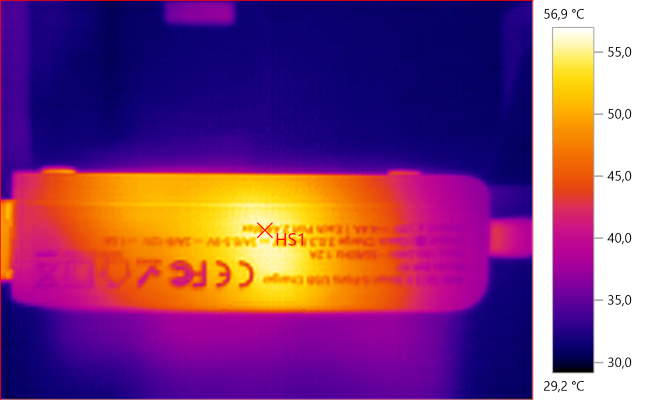
HS1: 56.9°C
HS1 is the rectifier transistor for USB.

HS1: 70.0°C

At 0.5A the noise is 6mV rms and 63mVpp.

At 1A the noise is 6mV rms and 70mVpp.

At 2.5A the noise is 6mV rms and 78mVpp.
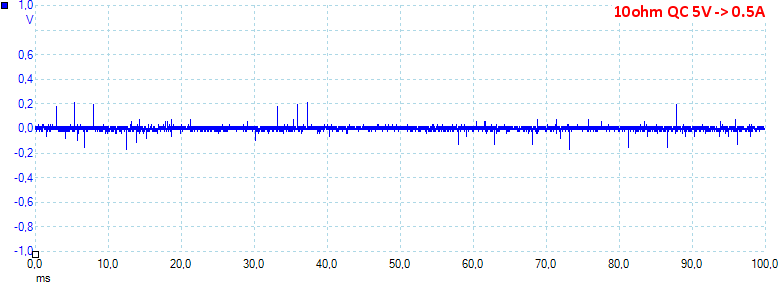
At 0.5A the noise is 17mV rms and 503mVpp.
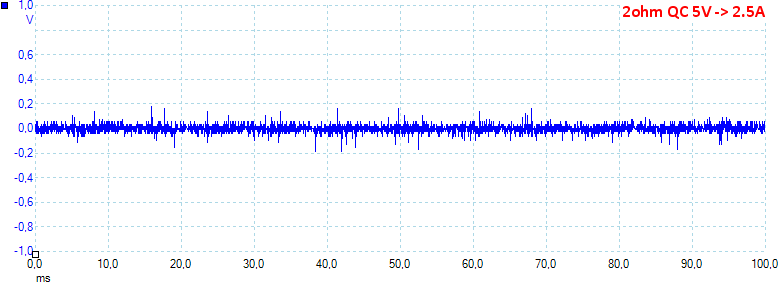
At 2.5A the noise is 53mV rms and 631mVpp.
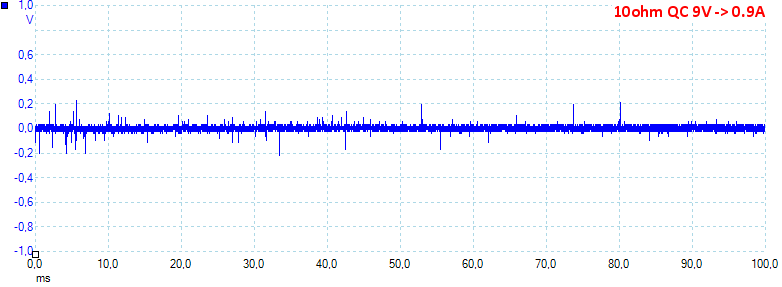
At 0.9A the noise is 42mV rms and 573mVpp.
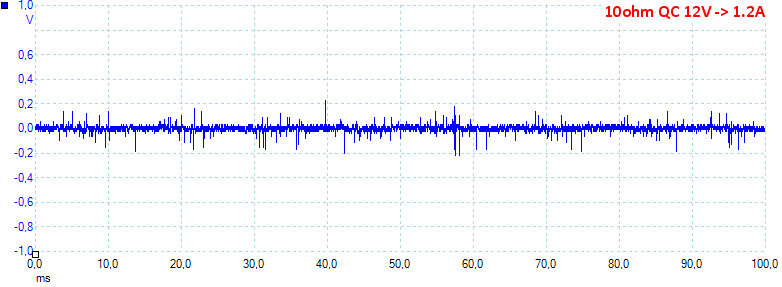
At 1.2A the noise is 26mV rms and 657mVpp.
Tear down
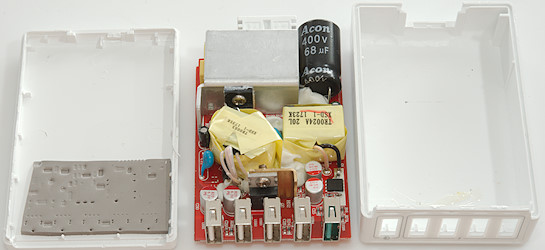
Some pressure in my vice and I could break the bottom off. The gray stuff can transfer heat, but there is not anything making heat where it is placed. If it had covered the big black chip it would have made sense.
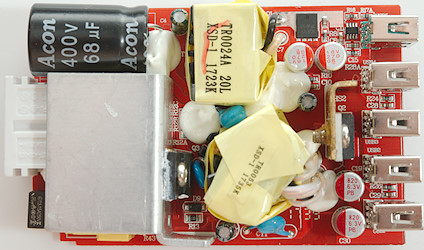
At the input is a fuse and two common mode coils, both placed under the heatsink and one hidden in yellow tape. The rectifier is also placed under the heatsink. On the heatsink is the mains switcher transistor for USB. There are two blue safety capacitors, one for each transformer.
At the low volt side is two rectifier transistors, for USB a large one on a heatsink for QC a SMD part. Just behind the QC USB connector is the QC controller chip.

A look under the heatsink.
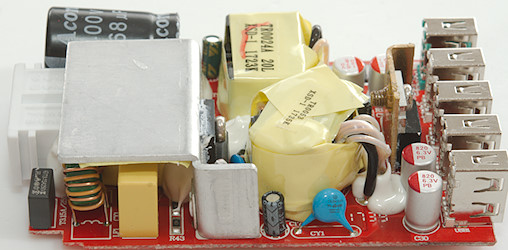
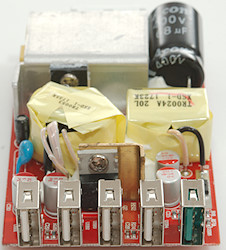



On this side is the mains switcher controller for USB (U9) with opto feedback (U5). The low volt side for USB output contains a synchronous rectifier controller (U8), a reference (U10: 431). It also looks like there is some current detection with a very small resistor (R7C: 10mOhm), another reference (U3: 431) and probably an OpAmp (U4). The four usb output has two dual auto coding IC's (U6 & U7).
The QC circuit is basically one IC (U1: INN2215K) that controls everything, except the QC part.
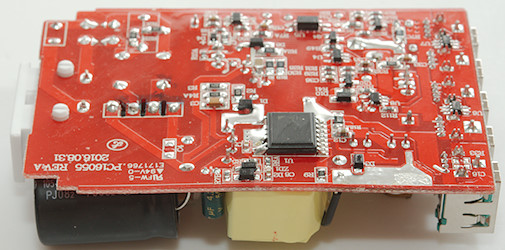
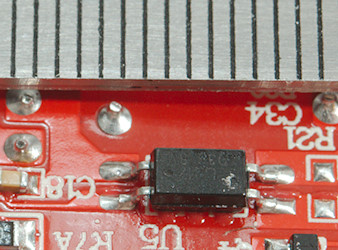

Some of the distances are slightly on the low side, the opto coupler has only 5mm pin spacing.
Testing with 2830 volt and 4242 volt between mains and low volt side, did not show any safety problems.
Conclusion
This is a fairly standard USB and QC charger, the output power on the 4 usb connectors is a bit low for 4 connectors, there is only power for two high power devices (With the QC port it means 3 high power devices). The ports are auto coding and the four ports a low in noise
Notes
Index of all tested USB power supplies/chargers
Read more about how I test USB power supplies/charger
How does a usb charger work?








































